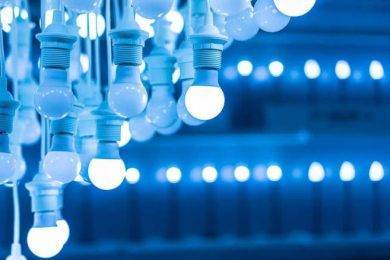In today’s fast-paced industrial landscape, productivity is the name of the game. Every business strives to optimize its operations, reduce downtime, and enhance employee performance. One often overlooked element that can impact productivity is lighting. Proper lighting in industrial settings is not just about visibility; it can also affect safety, employee well-being, and overall efficiency.
In this article, we’ll explore the importance of efficient industrial lighting and provide valuable insights into how to choose the right lighting solutions to boost productivity. From understanding the basics of industrial lighting to selecting the most suitable fixtures and technologies, we’ll cover it all.
The Impact Of Lighting On Productivity
Before delving into the specifics of choosing efficient industrial lighting, let’s take a closer look at how lighting can influence productivity in a manufacturing or industrial environment.
Safety: Safety should always be the top priority in any industrial setting. Insufficient or poor-quality lighting can lead to accidents and injuries. Adequate lighting ensures that workers can see potential hazards clearly, reducing the risk of accidents and improving overall safety.
Visibility: In manufacturing and assembly lines, employees need to see details clearly to perform tasks accurately. Proper lighting helps workers avoid errors and reduces the likelihood of defects in the production process. It also allows quality control inspectors to identify defects more easily.
Employee Well-Being: Adequate lighting has a positive impact on employee morale and well-being. Insufficient lighting can lead to eye strain, fatigue, and discomfort, which can affect job satisfaction and long-term employee retention.
Efficiency And Productivity: Good lighting can significantly enhance efficiency and productivity. Well-illuminated workspaces allow employees to work faster and more accurately. When workers can see what they are doing clearly, they are less likely to make mistakes or experience delays in their tasks.
Understanding The Basics Of Industrial Lighting
To choose efficient industrial lighting, it’s essential to understand the fundamental aspects of industrial lighting systems. Here are some key concepts to consider:
Luminous Flux: Luminous flux measures the total amount of light emitted by a light source and is typically expressed in lumens (lm). In industrial settings, a higher luminous flux often equates to better visibility and task performance.
Illuminance: Illuminance, measured in lux (lx), indicates how much light falls on a specific surface area. It is crucial to consider the required illuminance levels for various tasks in your industrial facility. Different tasks may require different levels of illumination.
Color Rendering Index (Cri): CRI measures how accurately a light source reproduces colors compared to natural sunlight. A higher CRI is desirable in industrial settings where color differentiation is crucial, such as in quality control or assembly work.
Color Temperature: Color temperature, measured in Kelvin (K), determines the perceived warmth or coolness of light. In industrial environments, cooler color temperatures (e.g., 5000K) are often preferred as they provide a more alert and focused atmosphere.
Energy Efficiency: Energy-efficient lighting not only reduces operational costs but also contributes to sustainability efforts. LED lighting is a better choice due to its high energy efficiency and long lifespan.
Selecting The Right Industrial Lighting Fixtures
Now that we have a basic understanding of industrial lighting concepts, let’s discuss the various types of lighting fixtures commonly used in industrial settings and how to choose the right ones:
High Bay Lights: High bay lights are usually used in large, open industrial spaces with high ceilings, such as warehouses and manufacturing plants. When selecting high bay lights, consider their wattage, luminous flux, and beam angle. LED high bay lights are the better choice for their energy efficiency and long lifespan.
Floodlights: Floodlights are often used for outdoor lighting in industrial facilities. They provide a wide beam of light and are essential for security and surveillance purposes. Look for LED floodlights that are durable, waterproof, and capable of providing the required illumination levels.
Linear Fluorescent Lights: Linear fluorescent lights have been a staple in industrial settings for many years. However, they are being replaced by LED alternatives due to their power efficiency and longer lifespan. When choosing linear lights, consider their length, color temperature, and CRI to match your specific needs.
Task Lighting: Task lighting fixtures are used to illuminate specific work areas or workstations. These fixtures should provide focused and adjustable lighting to suit different tasks. LED task lights with adjustable arms and brightness levels are an excellent choice for customization.
Emergency Lighting: In industrial settings, it’s crucial to have reliable emergency lighting systems in place. LED emergency lights with backup battery systems ensure that evacuation routes and safety exits remain well-lit during power outages.
Smart Lighting Controls: Consider implementing smart lighting controls that allow you to adjust lighting levels, schedules, and even color temperature remotely. This can optimize energy usage and adapt lighting to different tasks and work shifts.
Assessing Lighting Needs And Design
To choose the most efficient industrial lighting solution, it’s vital to assess your facility’s specific lighting needs and design a lighting plan accordingly. Here are the steps to follow:
Conduct A Lighting Audit: Start by conducting a thorough assessment of your current lighting system. Identify areas with inadequate lighting, obsolete fixtures, or excessive energy consumption. This audit will provide a baseline for your lighting upgrade project.
Determine Illuminance Requirements: Different areas within your facility may have varying illuminance requirements. Work closely with lighting professionals to determine the optimal illuminance levels for each space and task.
Consider Lighting Zones: Divide your facility into lighting zones, each with its lighting requirements. For example, manufacturing floors may require higher illuminance levels than storage areas. This zoning approach allows you to tailor lighting solutions to specific needs.
Explore Energy-Efficient Options: Opt for energy-efficient lighting solutions like LED fixtures, which not only consume less energy but also offer long-term cost savings. Calculate the return on investment (ROI) for your lighting project to ensure it’s financially viable.
Lighting Controls And Sensors: Integrate lighting controls and sensors that can automatically adjust lighting levels based on occupancy and natural light availability. This helps further reduce energy consumption and maintenance costs.
Compliance And Regulations: Ensure that your lighting design complies with building codes, safety regulations, and environmental standards. Non-compliance can result in fines and delays in your project.
Maintenance Considerations: Factor in the maintenance requirements of your chosen lighting fixtures. LED lights typically have a longer operating period and require less upkeep than traditional lighting options like fluorescent or incandescent bulbs.
Conclusion
Efficient industrial lighting is a crucial factor in enhancing productivity, safety, and overall operational efficiency. By understanding the basics of industrial lighting, selecting the right fixtures, assessing lighting needs, and considering energy-efficient options like LED lighting, businesses can create well-lit workspaces that support their goals.
In addition to increasing visibility and enhancing worker wellbeing, investing in high-quality lighting can save money over time by requiring less energy and upkeep. In a time when companies are always looking for methods to streamline processes, making the strategic decision to install efficient industrial lighting can pay out handsomely in the long term.











